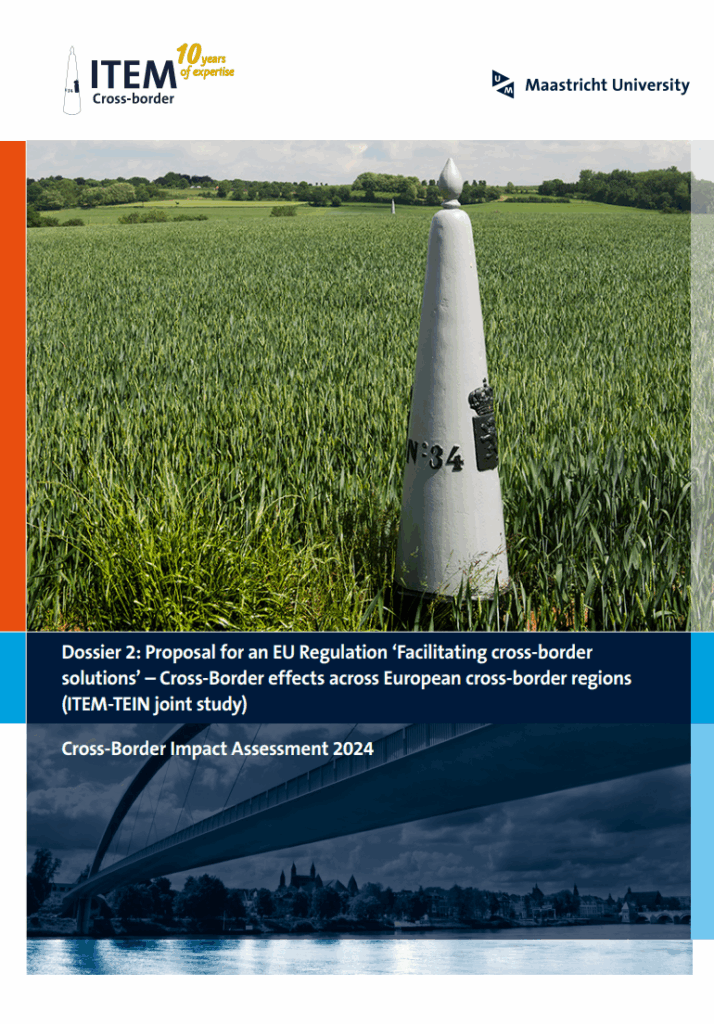On 19 May 2025, the European Union officially published the BRIDGEforEU Regulation 2025/925 (Border Regions’ Instrument for Development and Growth). This new legal framework offers Member States the option to adopt a governance structure aimed at structurally solving legal and administrative obstacles in border regions.
Under the Regulation, Member States may establish Cross-border Coordination Points (CBCPs) which will assess border obstacles and act as a ‘liaison’ between local stakeholders and national authorities. Additionally, Member States can make use of a Cross-border Facilitation Tool, a voluntary process designed to resolve regulatory barriers hindering cooperation between neighbouring regions.
The Regulation marks the culmination of over a decade of negotiations. In 2018 the European Commission’s proposed the European Cross-border Mechanism (ECBM) as a legislative tool to resolve obstacles in cross-border projects by allowing legal provisions from one EU Member State to apply in another. That plan was ultimately blocked by Member States citing concerns over subsidiarity and proportionality. In response, the European Parliament adopted a resolution in 2023 proposing amendments, introducing what became known as the BRIDGEU initiative. This led to an updated proposal by the Commission in December 2023 (“Regulation on Facilitating Cross-Border Solutions”) and a final agreement was reached at the end of 2024 on the now-adopted BRIDGEforEU Regulation. There is a clear transition from solving cross-border obstacles via a legal tool (ECBM) to addressing border obstacle solutions via a common governance structure (CBCPs).
As a result of the negotiations, there is considerable national freedom with regard to CBCPs: CBCPs are voluntary, and Member States retain control over their structure and scope. A CBCP may cover the entire country or focus on specific regions and may be run by national authorities or integrated into existing cross-border entities such as Euroregions. Moreover, the decision to address or solve any specific obstacle remains fully in the hands of national authorities.
One pilot example of a CBCP is already in operation between the Netherlands and Flanders (Belgium) through the Interreg project Het Schakelpunt Grensbelemmeringen Vlaanderen-Nederland. Border obstacles can be submitted to the Schakelpunt, which will identify and analyse the obstacle, and place potential solutions on the political agenda in consultation with organisations, as well as local, regional, national, and international authorities. A similar initiative is now being developed between Flanders and France.

In 2024, ITEM conducted a study on the potential impact of the (BRIDGEforEU) Regulation across EU border regions. Together with the TEIN network, the study analysed four case regions—including Benelux-Germany, France-Germany, the Czech-Polish Neisse-Nisa region, and the Austria-Hungary border near Bratislava. The report concluded that the clear benefit of the Regulation lies in its ability to establish, for the first time, a coordination point that collects and analyses administrative and legal cross-border obstacles, along with a governance framework for addressing them, particularly in border regions that lack such structures.
In European border regions where these structures already exist, the Regulation can enhance cohesion and improve the quality of cooperation by legitimising the functions of existing institutional frameworks and providing them with a more permanent basis (such as the Schakelpunt). However, given the voluntary nature to implement CBCPs and to solve border obstacles, implementation and the success of the Regulation will likely vary significantly across the EU depending on political will, financial resources, and institutional capacity. To fully realise the Regulation’s potential, ITEM, together with the TEIN partners, recommends strong political commitment, adequate funding, legal tools, and balanced geographic implementation of the CBCPs.
The BRIDGEforEU Regulation will enter into force on 8 June 2025.

